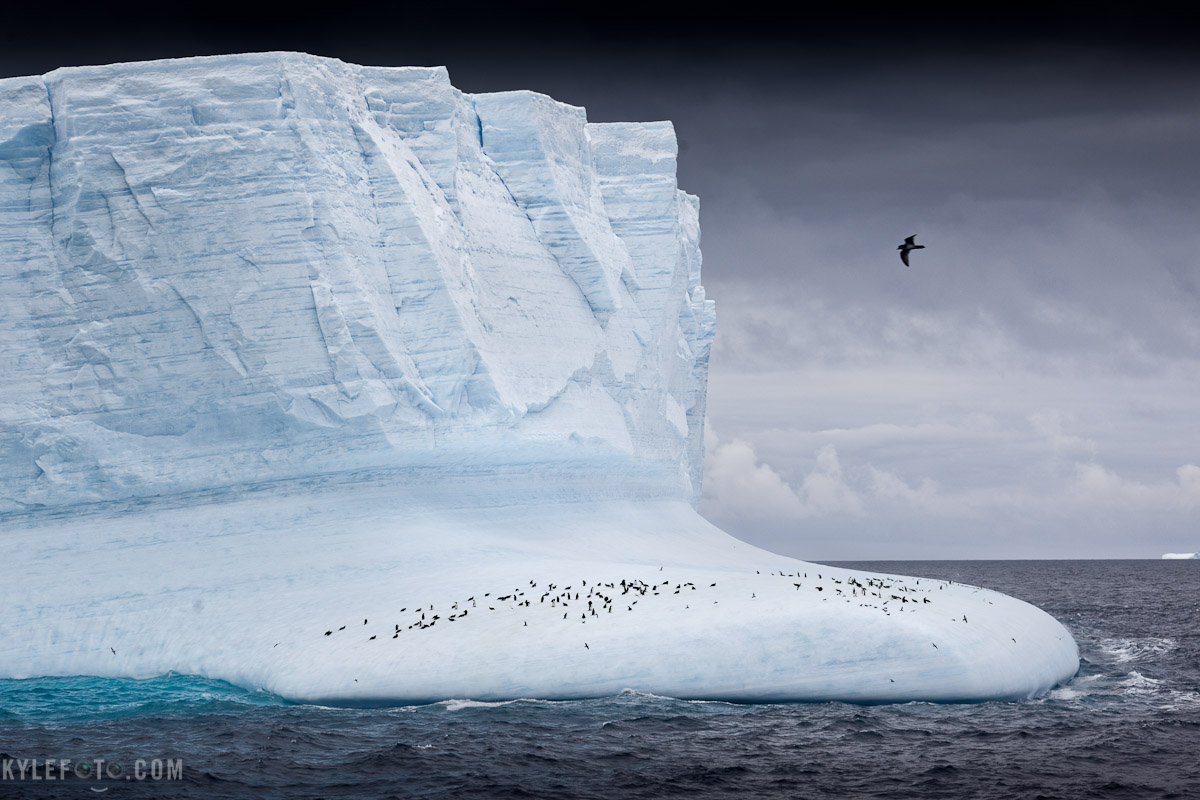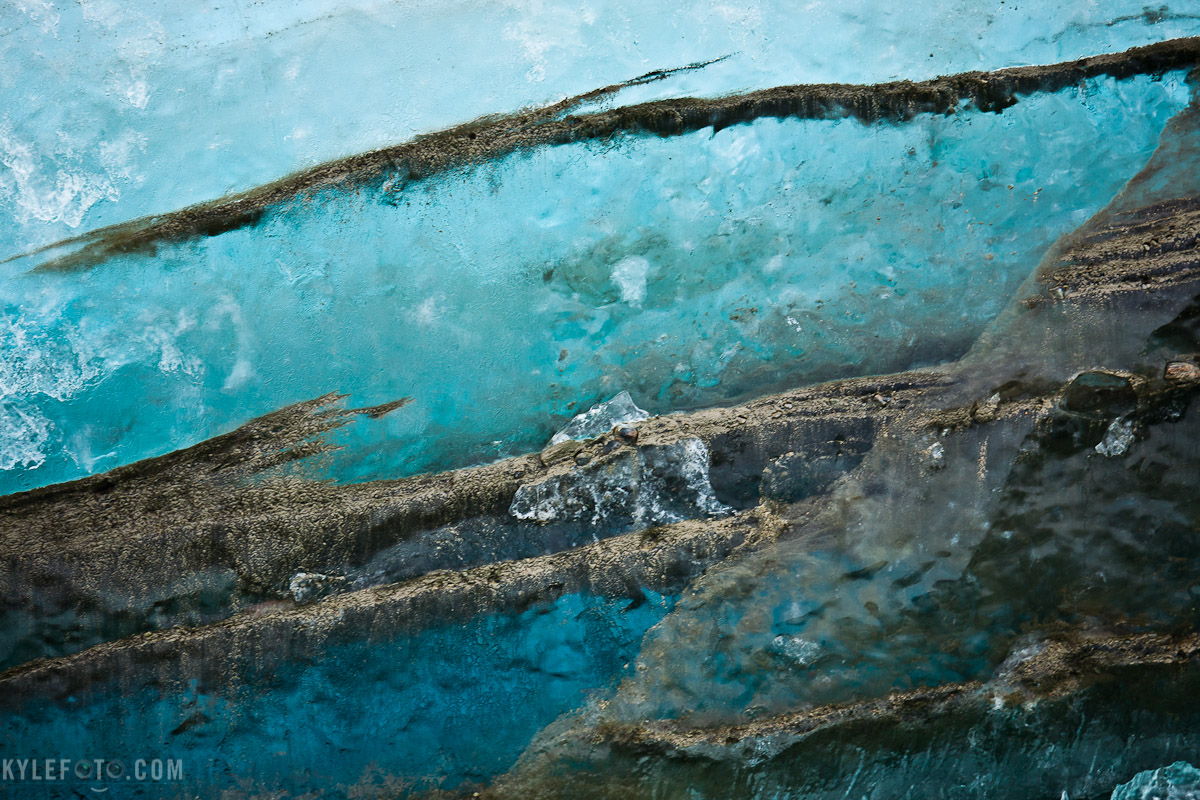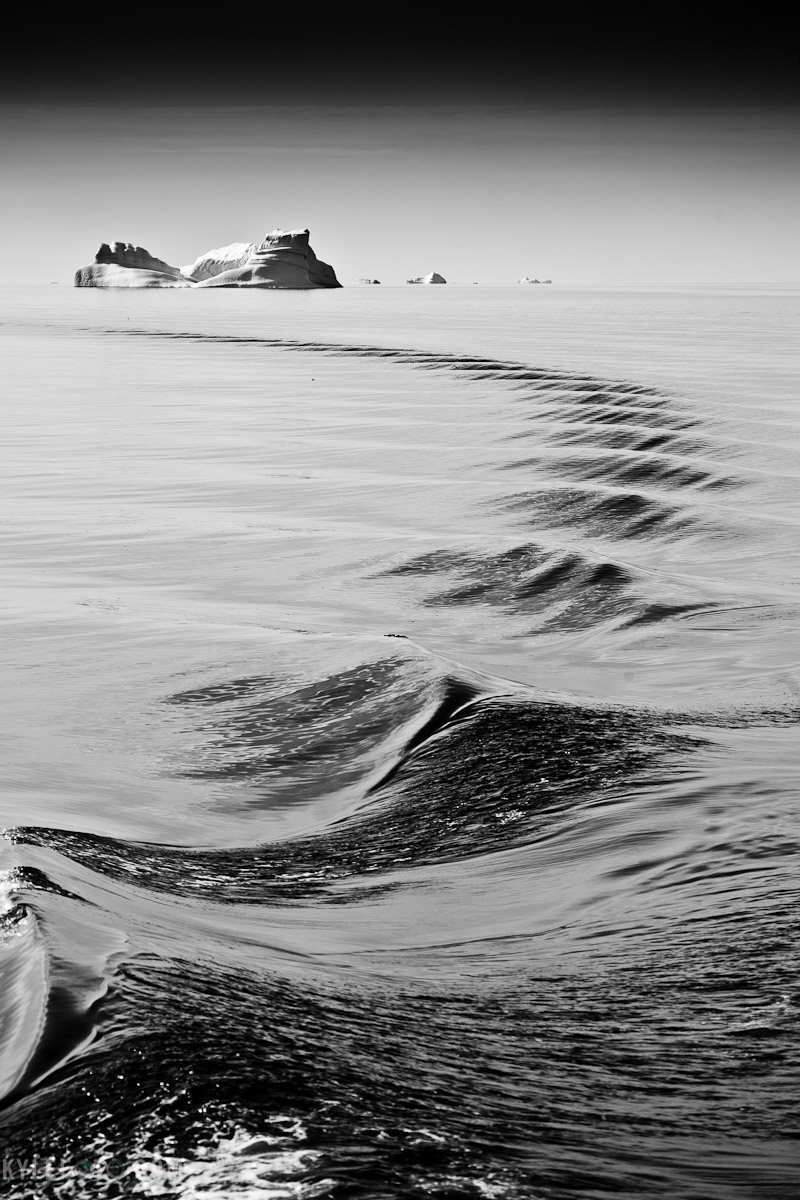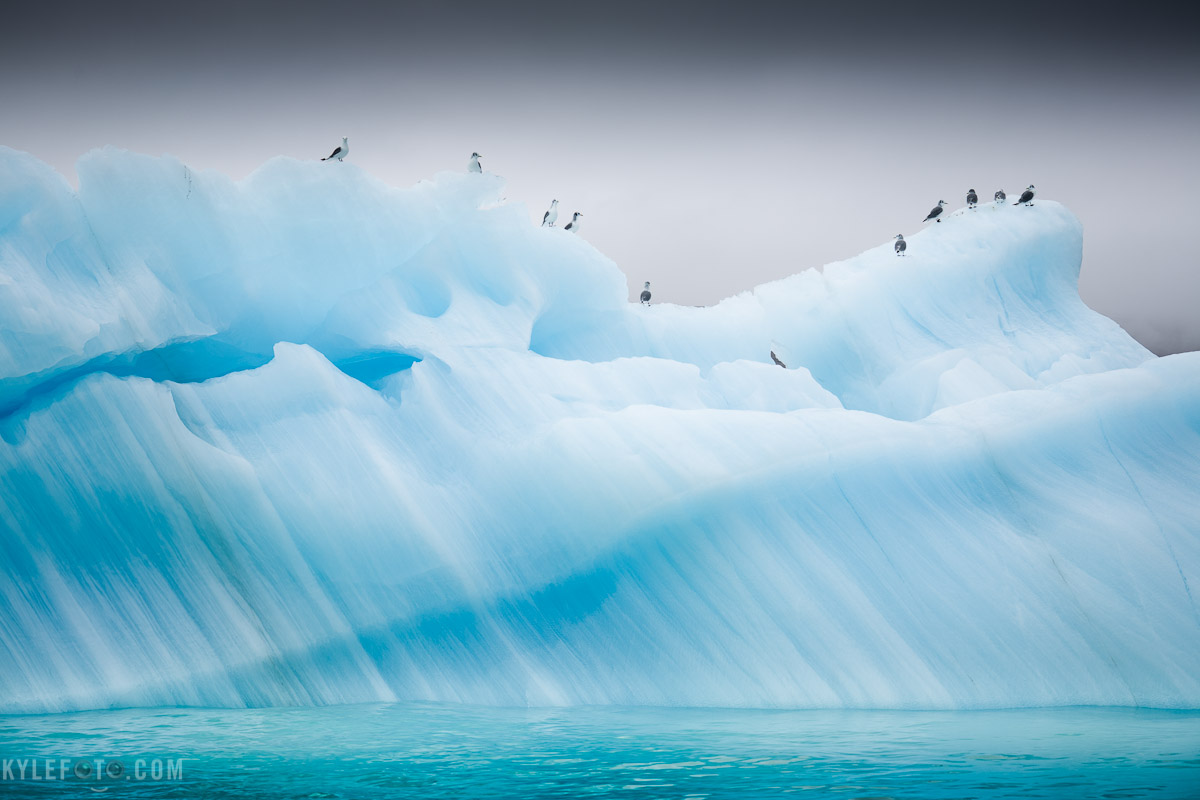Antarctic Peninsula
Look at this iceberg now, then look at it after reading this and you will actually be able to read this iceberg.

There are so many stories in this photo alone I don’t know where to begin. I should start with the fact that a quick glance at an iceberg can tell us a lot about it’s history; mother nature etches a story in every crack, layer, texture and curve.
First of all this iceberg is in mostly in the same orientation it was when it first broke off the glacier it came from. The horizontal lines are the layers of snow that have been compressed into ice while the glacier was flowing down the mountain, as well the surface had an edge of snow, still built up from high precipitation, this tells us the ice is still mostly upright.
Once this huge chunk of ice was set free into the ocean, it began to melt faster than it would as a glacier. The currents and movement of the salty sea water begin eroding the bottom of the iceberg but in a smooth pattern, turning hard edges into soft curves. The “shoreline” on the iceberg is where the lapping of the waves on the surface erode the iceberg the most, creating the indentation in the middle where the smooth ice ends and the rough untouched ice begins.
As the iceberg melts and chunks fall off, the balance changes. As you can see the lower right portion of the iceberg used to be underwater because it’s smooth, it’s now above water with the new weight distribution.
This iceberg is now peppered with Adele penguins. It may be a lot of penguins who are two years old and younger; essentially spinster penguins not yet mature enough to breed. They have no obligation to be in a colony and get to spend the first two years of their life feeding and enjoying themselves. The cape petrel flying on the top right creates a point of interest in the most perfect spot, further illustrating how icebergs can be mother natures “rest stops”.
But there is more! Ice creates a mini ecosystem that krill and small copepods and crustaceans tend to cling to. Small slivers of grey dot the lower left of the iceberg betraying the presence of Antarctic Terns fishing for these small creatures. These waters are rich with life, and as desolate as an image can seem, a trained eye can see an abundance of wonderful creatures.
Take a look at the ice again, do you see what I see?
If you like this, do me a favor please share!





















